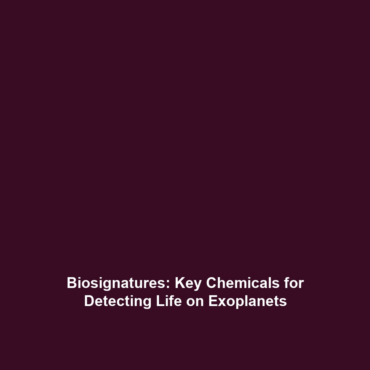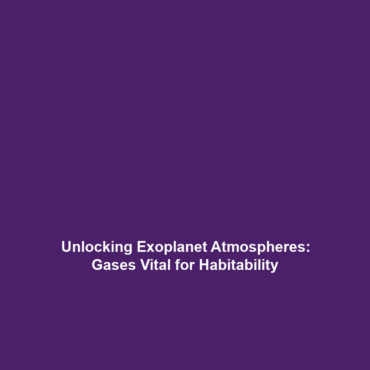Kepler-186f: The First Earth-Sized Planet Discovered in the Habitable Zone of Its Star
Introduction
Kepler-186f is a landmark discovery in the field of exoplanets, being the first Earth-sized planet found within the habitable zone of its star. This unique positioning suggests the potential for liquid water to exist on its surface, raising intriguing questions about extraterrestrial life. The significance of Kepler-186f extends beyond mere curiosity; it provides insight into the conditions that allow for life beyond our solar system. This article explores the major aspects around Kepler-186f, illustrating its relevance in the broader context of exoplanet research.
Key Concepts
Understanding Kepler-186f requires familiarity with several key astronomical concepts:
Exoplanets
Exoplanets are planets located outside our solar system, often orbiting other stars. The discovery of exoplanets, including Kepler-186f, expands our understanding of planetary systems and their diversity.
Habitable Zone
The habitable zone, often referred to as the Goldilocks zone, is the region around a star where conditions are just right for liquid water to exist—a critical ingredient for life as we know it. Kepler-186f’s location in this zone marks it as a prime candidate for studying planetary habitability.
Applications and Real-World Uses
Kepler-186f’s discovery has sparked significant interest in several fields:
- Astronomical Research: Insights gained from studying Kepler-186f inform models of planet formation and habitability.
- Astrobiology: The planet’s characteristics guide the search for potential life beyond Earth.
- Space Exploration: Understanding exoplanets like Kepler-186f helps prioritize targets for future missions.
Overall, examining how Kepler-186f is used in the study of exoplanets offers valuable lessons about our universe.
Current Challenges
Despite its promise, studying Kepler-186f presents several challenges:
- Distance: Kepler-186f is located approximately 500 light-years away, complicating direct observation.
- Atmospheric Analysis: Detailing the atmosphere of Kepler-186f remains a difficult task with current technology.
- Data Limitations: Initial data collected are insufficient for conclusive findings regarding its habitability.
These challenges highlight the issues in exoplanet studies as researchers continue to improve observation techniques.
Future Research and Innovations
Future research on Kepler-186f may lead to groundbreaking discoveries. Innovations in space telescopes and detection methods, such as:
- Next-Generation Space Telescopes: Upcoming missions like the James Webb Space Telescope are expected to provide deeper insights into exoplanet atmospheres.
- Advanced Spectroscopy: Techniques that measure the light spectrum from distant planets to identify chemical signatures.
These technologies may revolutionize our understanding of Kepler-186f and its potential to support life, influencing the future of exoplanet exploration.
Conclusion
In summary, Kepler-186f represents a significant milestone in exoplanet research, combining intriguing characteristics and potential implications for life beyond Earth. As we advance our understanding of this fascinating planet, we invite readers to explore related topics such as recent exoplanet discoveries and habitable zone research. Staying informed about these developments is crucial as we venture into the realms of what lies beyond our solar system.









